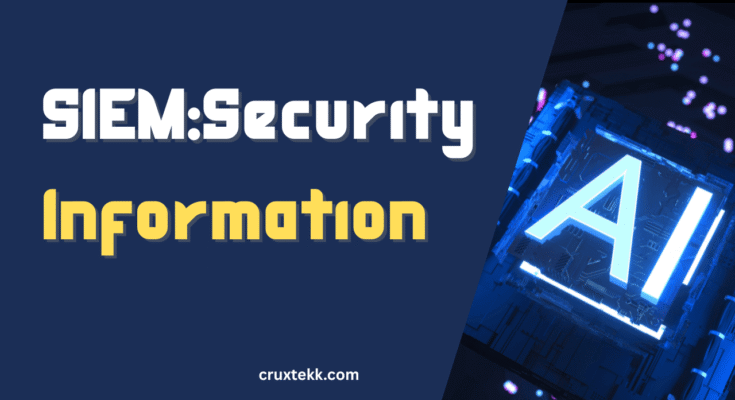In the digital age, cybersecurity threats are evolving faster than ever. Organizations need real-time visibility and insights into their security posture to stay ahead of potential threats. This is where SIEM (Security Information and Event Management) comes into play. SIEM tools have become a cornerstone of modern cybersecurity strategies, helping businesses monitor, detect, and respond to security incidents more effectively.
What is SIEM?
SIEM stands for Security Information and Event Management. It refers to a system that aggregates and analyzes activity from different resources across your IT infrastructure. A SIEM system provides real-time monitoring, event correlation, and historical data analysis to detect and respond to potential security threats.
SIEM combines two key technologies:
- Security Information Management (SIM): Collects and analyzes log data.
- Security Event Management (SEM): Provides real-time monitoring and alerting of events.
Together, these capabilities empower organizations with advanced threat detection, incident response, compliance reporting, and forensic investigations.
How Does SIEM Work?
SIEM platforms collect log and event data from various sources such as:
- Firewalls
- Servers
- Routers
- Applications
- Endpoint devices
- Cloud services
The system then:
- Normalizes the data from diverse sources.
- Correlates events to identify suspicious patterns or behaviors.
- Alerts security teams in real-time.
- Stores historical data for compliance and forensic analysis.
For example, a SIEM might detect a brute-force login attack by correlating multiple failed login attempts across different systems within a short timeframe.
Key Features of a SIEM System
- Centralized Logging: Collects logs from across the IT ecosystem.
- Event Correlation: Identifies patterns that indicate threats.
- Real-Time Alerts: Notifies IT staff about potential issues instantly.
- Dashboards & Reporting: Visualizes data to support security decisions.
- Compliance Support: Helps meet regulatory requirements like HIPAA, PCI DSS, and GDPR.
- Forensic Analysis: Investigates incidents post-attack to improve future responses.
Benefits of Using SIEM
Improved Threat Detection: Early identification of anomalies and suspicious behavior.
- Faster Incident Response: Automated alerts and workflows streamline mitigation.
- Regulatory Compliance: Simplifies the process of maintaining security standards.
- Enhanced Visibility: Centralized overview of all security events.
- Cost Efficiency: Saves time and resources by automating monitoring and reporting.
Challenges of Implementing SIEM
Despite the benefits, organizations often face challenges when deploying SIEM:
- Complexity in Setup: Initial configuration can be resource-intensive.
- High Volume of Alerts: Can result in alert fatigue without proper tuning.
- Cost of Licensing and Maintenance: SIEM solutions can be expensive.
- Need for Skilled Personnel: Requires trained security analysts to manage and interpret data.
However, with careful planning and the right vendor, these challenges can be mitigated effectively.
Popular SIEM Tools in 2025
Some of the top SIEM platforms in the market include:
- Splunk
- IBM QRadar
- LogRhythm
- Microsoft Sentinel
- ArcSight
- Elastic SIEM
Each has unique features, scalability, and pricing structures that suit different business needs.
FAQs About SIEM: Security Information & Event Management
Q1: Is SIEM only for large enterprises?
A: No. While SIEM systems are popular with large organizations, there are many scalable and cloud-based SIEM solutions suitable for small and medium-sized businesses.
Q2: Can SIEM detect insider threats?
A: Yes. By analyzing user behavior and access patterns, SIEM can help identify suspicious internal activities.
Q3: How does SIEM support compliance?
A: SIEM tools generate reports and logs required for audits and help maintain standards like ISO 27001, PCI DSS, and more.
Q4: What is the difference between SIEM and SOAR?
A: SIEM focuses on threat detection and analysis, while SOAR (Security Orchestration, Automation, and Response) automates response actions and workflows.
Conclusion
SIEM: Security Information & Event Management is an essential solution for modern cybersecurity. With increasing threats and regulatory pressures, organizations need the insights and automation that SIEM platforms provide. Whether you’re a startup or an enterprise, investing in a SIEM tool can greatly enhance your ability to detect, investigate, and respond to threats in real time.



